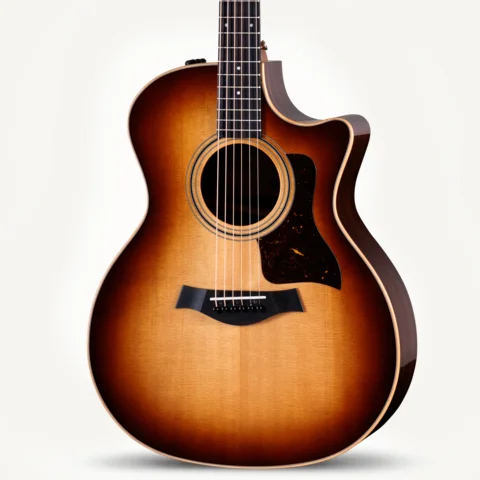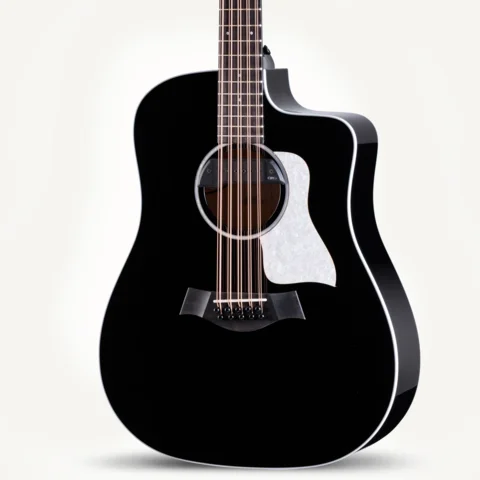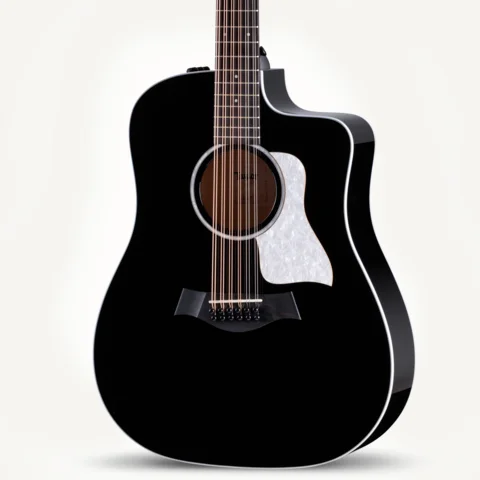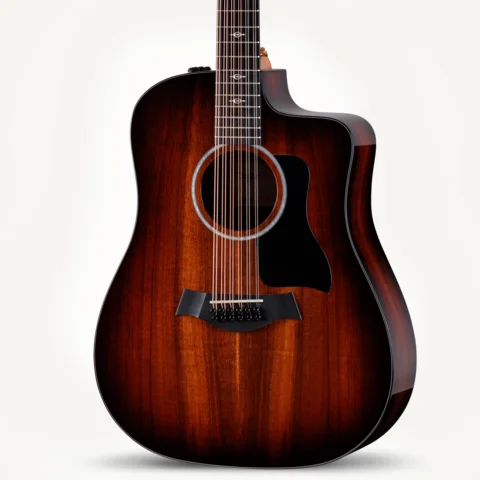Acclaimed jazz guitarist Mimi Fox talks about her new all-acoustic album, This Bird Still Flies, and her inventive approach to composing, arranging and improvising
When we last wrote about internationally renowned guitar virtuoso and music educator Mimi Fox (summer 2018), she was still enjoying the honeymoon phase with her new Builder’s Edition K14ce. As Fox shared at the time, she was returning to her acoustic roots and looking forward to using her new Taylor on an all-acoustic album she was getting ready to record. The release, This Bird Still Flies, is now available, and listeners are bound to be enthralled by this latest installment of Fox’s improvisational magic.
Fox is best known in the jazz world — she’s a six-time winner of DownBeat Magazine’s International Critics Poll; she’s performed or recorded with jazz guitar icons including Charlie Byrd, Kenny Burrell, Mundell Lowe, Charlie Hunter and Stanley Jordan; and none other than the late, great Joe Pass once observed that Fox “can do pretty much anything she wants on the guitar.” And yet to frame Fox as an electric jazz guitarist (she plays a signature-model archtop made by Heritage) would be to shortchange her expansive artistic range, as her eclectic acoustic collection so eloquently testifies.
“There’s so much music that I love, and I refuse to be pigeonholed,” she says. “I’m very proud to be a jazz musician, and yet it’s not all of who I am. Though no matter what I play, I’m an improviser.”
Like many guitarists, a steel-string acoustic was Fox’s first instrument, and she spent her teenage years learning to play the folk songs of Joni Mitchell, James Taylor, Paul Simon and Crosby, Stills and Nash. Her latest project reconnected her with the intimate nature of the acoustic playing experience.
“I feel like when I play acoustic, there’s an immediacy to it,” she says. “I love the wood reverberating against my body. This album reflects more than half a century playing this instrument, and in a way it feels like coming home.”
The record also channels her refocused creative mindset in the wake of two transformative life events: a successful fight against breast cancer and a major relationship breakup. Coming out the other side of those experiences, she says, felt like a rebirth.
“I’m in the best place of my life, and I wanted my music to reflect that,” she shares.
This Bird Still Flies treats listeners to a scenic sonic journey that blends original compositions with fresh interpretations of standards, folk, R&B and pop hits (including a pair of Beatles songs). Fox performs this wide-ranging material both solo and as duets with herself (along with one duet with rock guitarist Andy Timmons) — but always with a singular voice. She recorded the album using both the Builder’s Edition K14ce and her Taylor Baritone 320e. Frequent Wood&Steel contributor Shawn Persinger recently sat down with Fox to talk about her influences, technique, composition and, of course, her Taylor guitars.
— The Editor
Shawn: I find your playing to be unusually aggressive for an acoustic guitarist, and I mean that in the best way. You have a large dynamic range, and you can play laid back and delicately, but you also, frequently, really dig in and get a lot out of the guitar. Is this a natural tendency, or have you made a concentrated effort to play more aggressively than the average jazz or acoustic guitarist?
Mimi: I moved from New York to San Francisco over 30 years ago and one reviewer out here said that I had remained immune to California’s mellow vibe. It’s true, I have. I wrote a tune on one of my earlier albums called “East Coast Attitude,” and I think I’ve retained that intensity and that fast pace. But I’ve never thought about it. It’s a good question. I don’t know if it’s a conscious choice or organic. But I am a very passionate person and I think that comes out when I play.
Shawn: I couldn’t help thinking that the jazz standards on your new recording, which were played on your Taylor Builder’s Edition K14ce, would have been performed very differently had you played them on a traditional jazz archtop guitar. Is that true? Does playing jazz on a Taylor modify your approach?
Mimi: Absolutely. When I sit down and play an acoustic guitar, because that’s what I started on, it always feels like I’m coming back home to an earlier part of my musical personality. So even though now I have all my jazz chops, and a distinctive voice on my hollow-body guitars, when I play an acoustic there is a visceral feeling I get. Also, my early influences were not jazz artists, they were Stephen Stills and Joni Mitchell and other folk artists. For instance, I had Stephen Stills’ first solo album, and it has this great acoustic number on it called “Black Queen” that I used to play, so Stills was a big influence. And then there were also classical guitarists: Julian Bream, Segovia and Christopher Parkening. So, yes, playing acoustic guitar definitely comes from a different place. Not to mention, I love my new Builder’s Edition, I am completely smitten with this guitar. It is gorgeous to look at and it’s beautiful to play. When I first got it, I could not put it down, it was like being a kid again.
Shawn: What are some specific features you like about that guitar?
Mimi: This one has something very special. The koa wood on the back and the spruce on the top create this beautiful sound: It’s warm but not too warm, bright but not too bright, it hits that sweet spot. Also, I really admire Taylor as a company, I like their values and I like how they treat their people, and, of course, their guitars are amazing.
Shawn: If I can jump back a minute to what you said about Stephen Stills: He uses a lot of alternate tunings. Do you play in any alternate tunings?
Mimi: I explored that a little, years and years ago, and it would really throw me off. I did record “Footprints” [Wayne Shorter] once, on a 12-string, and I tuned the low E strings down to C, the song is in C minor, so occasionally I will…but to answer your question honestly, no, not really. It’s similar to when someone says to me, “You should try a 7-string guitar.” I know I should theoretically, but I feel like I’m just finally learning how to play the guitar in standard tuning, so honestly the alternate tunings just confuse me! Now I could write and play a piece in an open tuning, but then I couldn’t really improvise on it because the fretboard is all messed up [laughs].
Shawn: When listening to your new record, even though much of it sounds like fingerstyle guitar, I couldn’t tell how much was fingerpicked versus flatpicked versus using hybrid picking. Do you fingerpick on the new record?
Mimi: No, I’m really wed to my little jazz picks, so I use mostly a hybrid picking technique, the pick plus my middle finger. Sometimes I use another finger to grab chords but never just my fingers. Well, I do palm my pick when I play octaves, but that’s about it. And when I’m practicing at home, sometimes I’ll play without the pick, but otherwise the pick is what I’m most comfortable with.
Shawn: Speaking of practicing: How much do you practice these days? That is to say, serious, deliberate study of new techniques and approaches as opposed to serendipitous playing?
Mimi: It’s a little bit of both. If I get called by someone to go on the road and it’s a good gig but there are tunes I need to learn, obviously I need to practice them — I don’t like to read on the bandstand; I like to get rid of the charts.
I think the only time I mess with technique is if I’m working on something and I’m having trouble with the articulation. I can give you an example: There is this really great Chick Corea piece called “Got a Match?” It’s not a hard tune harmonically, but the head [melody] does not lay comfortably on the guitar. And, originally, I was using too much of a legato, slurring articulation, and I thought, maybe I need to use a separate, picking-each-note technique, and that worked. So it’s specific to what I’m working on.
But I’m always working on new ideas. I do work from the Slonimsky book [Nicolas Slonimsky’s Thesaurus of Scales and Melodic Patterns], and I like to play through classical guitar studies, Vivaldi and Bach, so yes, I do still practice. But because I’m a composer I also like to leave room to follow my muse as I’m composing. And sometimes a song will come out of something I’m practicing; though, more likely, when I’m writing, it has to be an inspiration that comes from a person or someplace I’ve been.
Melody to me is sacred.
Shawn: On that compositional note, let’s talk about some songs from your new album. The playing in “Textures of Loving” seems to refer to the many different attacks, articulations, and tempos you perform during the course of the tune. You play harmonics, arpeggios, single-note runs, even some light guitar-as-percussion-instrument techniques. What came first, the concept or the music?
Mimi: Well, that piece is one of my earlier compositions. I think I wrote that piece when I was about 22, and you can hear that I had been studying classical guitar, but to me it is never a conscious decision — am I going to play harmonics or do this or do that — it’s more, as a composer, where is the song taking me? The music shouldn’t be contrived.
Shawn: While most of your new album features you performing solo, “Twilight in the Mangroves” and “Against the Grain” are both duets, with you performing both parts. When do you decide that a piece is going to work better as a duet rather than as a solo piece?
Mimi: A lot of it depends on how the piece evolves as I’m composing it. In the case of “Against the Grain,” there were always two separate parts, because the bass is in 5/4 and the head that plays against it is more 4/4; that’s why it’s called “Against the Grain.” So in that case it felt like it had to have two guitars. “Twilight in the Mangroves” I can, more or less, play solo, but it just plays easier with two parts. Also, on both of those pieces I like to solo, so I need another guitar backing me up.
Shawn: Although, on other tracks, notably your cover of The Beatles’ “Day Tripper,” you play a lot of single-note lines, without accompaniment, more like a violinist or saxophonist, which is something many guitarists shy away from.
Mimi: Well, like most solo jazz guitarists, at any point I could go into walking basslines with chords that would fill it out, but, honestly, after playing solo guitar for so many years, I get a little bored with walking bass lines. I figure, if my time is strong, listeners can hang with some long single-note lines. I’ll still put some chords in, or I’ll reference the bass here or there, but I’m hoping that the piece will still be cohesive, it will still hang together, if my time is solid. I tell my students, when playing solo guitar, if your time is not like a rock you will not be successful at it. You can sit and play pretty little things rubato, set arrangements of pieces, but if you’re going to blow and take chances you have to have this big forward motion where you’re able to propel the piece forward even though there are no chords. It’s a little bit more demanding of my audience….
I get bored with walking bass lines. I figure, if my time is strong, listeners can hang with some long single-note lines.
Shawn: I was going to say, you run the risk of asking too much from the listener, which I think is admirable. You’re talking about having your time being rock solid, but you don’t play like a metronome. You know where the pulse is, you’re aware of the time, but you’re not trying to emphasize it by playing every downbeat or straight eighths throughout. There is an awareness of the pulse, but your playing is still free and capricious.
Mimi: Exactly. It’s an intuitive process, and I hope that listeners can hear where I’m coming from and follow along. If I’m authentic as an artist, I figure if I’m bored with something then that’s not cool. Yeah, maybe some folks in the audience could follow it better [if there were accompaniment], but if it’s not moving me, how can I expect it to move other people?
But when I do shows I do mix and match. I do have a set arrangement of “America the Beautiful,” and even though I’m improvising some of it, it is an arrangement that I came up with that is going to be, more or less, that way whenever I play it. And then I will add different things, because I like to improvise even on arrangements. But then if I’m doing a piece like “Blue Bossa,” something I’ve played a million times, I’m going to try to do something different. Otherwise I have no business playing that piece if I don’t have something new to add to it.
Shawn: Ah yes, “Blue Bossa,” the curse of every first-year jazz student! A cliché I avoided for years and years and then I went to a jam one night and these cats tore it apart! They basically played it as a high-octane samba and I thought, “Oh, it’s not the song, it’s the uninspired performances I’ve heard in the past.”
Mimi: Right, it’s not the song’s fault.
Shawn: Getting back to “Day Tripper” for a minute, you play that on your Taylor Baritone, correct?
Mimi: Correct. The 320e, and that guitar has this kind of funky and meaty sound that I thought would be fun for “Day Tripper.” I love it. I also have a Taylor 12-string, which I didn’t use on this particular album, but I like having the variety when I’m doing mostly solos or duets.
Shawn: You also perform a distinctive version of The Beatles “Blackbird,” focusing more on the melody than the iconic fingerpicking guitar accompaniment that so many players fixate on. When you create an arrangement, do you try various approaches, or do you start with a fixed idea — for instance, avoiding the obvious — and try to stay true to that, despite the challenges it might present? Or do you mix it up?
If I’m doing a piece I’ve played a million times, I’m going to try something different. If I don’t have something new to add to it, I have no business playing it.”
Mimi: Probably a little of everything. Whenever I do an arrangement…first, the melody has to be compelling. Now “Blackbird” is a tune that I would talk about in a jazz composition class. That piece has an AABA form and is going to stand up with Rodgers and Hart, with Cole Porter, with Gershwin, with any of the songs from the Great American Songbook. It’s a masterpiece. I mean, forget the lyrics, which are just gorgeous…but the melody is everything. And melody to me is sacred. So if I have a beautiful melody, then I take the next step, which is…Paul McCartney already recorded that tune, it was perfectly done, so I’m not going to replicate that. The only time, at the very end of the piece, I play a little of the [sings McCartney’s guitar part for “Blackbird”] as sort of a whimsical moment at the end of the piece to reference that I actually do know what the original sounds like. But I always try to think, “What can I do to make the piece mine?”
For instance, I recorded Miles Davis’ “All Blues” on an earlier album, and I completely tore it apart, what they call “deconstructed.” I basically said, what if I start with some open chords and a Delta blues kind of feeling, and then eventually I reharmonized it? Whenever I do a tune that has been done so many times, I think, What can I do that will bring something fresh to the piece?, or else, why bother?
Shawn: That innovative approach comes through on your version of the jazz standard “You Don’t Know What Love Is,” which seems to pay homage to a variety of guitarists such as Joe Pass, Herb Ellis, even Heitor Villa Lobos, without ever compromising your own voice. On a performance like this, are you trying to pay homage to your influences or do they appear instinctively?
Mimi: You just named all people that I’ve listened to, [some of whom] I’ve had the opportunity and pleasure to play with…but yeah, I listen to everything. I tell my students, “Be a sponge and never have a closed mind.” Before I signed to Favored Nations, I really didn’t know much about rock at all, and certainly not any metal, and then Steve Vai sent me a lot of his recordings, and I heard some Joe Satriani, and years later Paul Gilbert asked me to come and be a guest artist at one of his Great Guitar Escapes, and all of these guys are fantastic musicians. So yes, you’re hearing people I’ve listened to or played with, but you’re also hearing a smorgasbord of music because that’s what I like to listen to. And you don’t get your own voice unless you honor the people that you’re standing on the shoulders of.































































